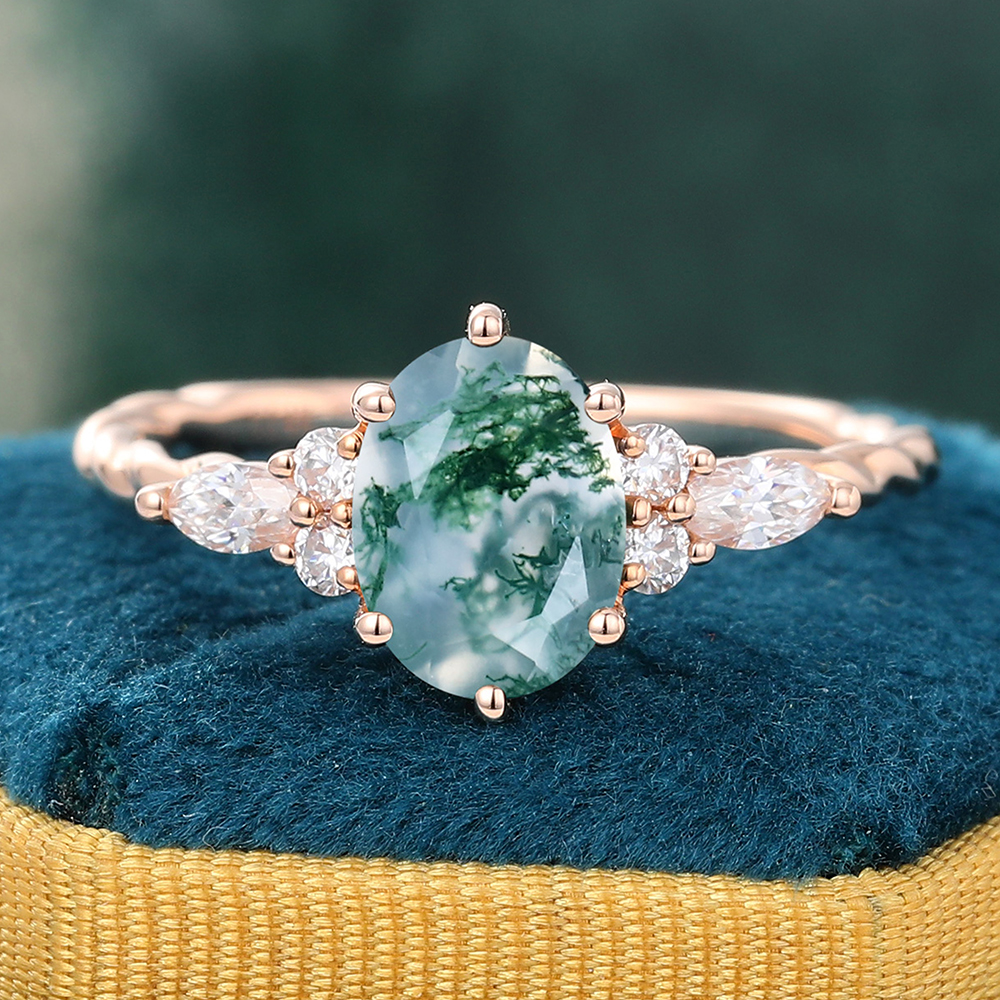The Manufacturing Techniques of Lab Gemstones
Apr 24,2024 | Juyoyo
Gemstones hold a pivotal position in the domain of exquisite adornments. Given authentic gemstone scarcity and extravagant costs, individuals have gravitated towards lab-created gems, also known as synthetic gemstones. These lab gems mimic natural gemstones' visual, physical, and chemical characteristics and are more budget-friendly, thus gaining momentum in the jewelry domain. Let's explore the mysterious realm of lab gemstones collectively.
Juyoyo Oval Cut Lab Sapphire Twisted Engagement Ring
What Are the Primary Fabrication Methodologies of Lab Gemstones?
Flame Fusion (FF)
Flame fusion stands as a pioneering technique and the inaugural approach to crafting lab gemstones. The fundamental principle involves liquefying raw material powders in intense flames, cooling, and crystallization.
High-Pressure High Temperature (HPHT)
The HPHT procedure mimics the high-temperature and high-pressure conditions under which natural gemstones originate deep beneath the earth's surface. By subjecting the raw material solution to heat and pressure within a sealed vessel, it dissolves, precipitates, and crystallizes. Currently, this method ranks among the methodologies utilized for producing lab gemstones.
Flux-Melt Method (FM)
The flux-melt method introduces a unique component known as flux into the framework of hydrothermal processes. By amalgamating the raw material with an appropriate quantity of flux, the flux reduces the melting point of the raw materials, accelerates the melting process under elevated pressure, and subsequently cools to crystallize into gemstones.
Chemical Vapor Deposition (CVD)
Chemical vapor deposition emerges as the most prevalent technique for fabricating lab gemstones. The underlying principle involves situating the raw material alongside a blend of gases like carbon, hydrogen, and oxygen within the same growth chamber. The vapor generated through heating is introduced onto a substrate, where it precipitates and matures into crystalline gemstones.
Juyoyo Oval Cut Lab Alexandrite and Diamonds Engagement Ring
Which Technique Is the Most Prevalent for Producing Lab Gemstones?
CVD and HPHT serve as prevalent techniques for manufacturing lab gemstones, with HPHT holding more prominence in production and CVD being more widespread in the jewelry sector.
Which Method Is Superior Between Cvd and Hpht?
From a cost perspective, CVD is favored due to its lower expenses. Concerning quality, HPHT replicates the natural gemstone formation process, rendering HPHT gemstones of superior quality compared to CVD.
Juyoyo Oval Cut Lab Grown Diamond Engagement Rings
In Conclusion:
With the advancement of technology, the manufacturing procedures of lab gemstones will evolve into more intricate processes, resulting in superior-quality merchandise. Furthermore, as society emphasizes sustainable growth and ethical consumption, combined with the cost-effectiveness of lab gemstones in contrast to natural ones, the market demand for lab gemstones is expected to surge.














